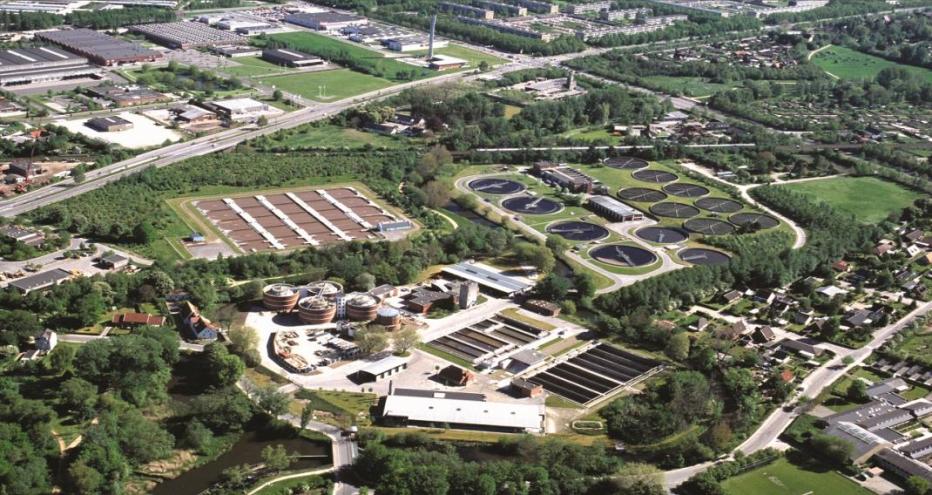
Municipal wastewater treatment in the United States is a significant energy consumer, accounting for approximately 2-3% of the nation's total electricity usage.
Energy costs are second only to labor expenses in the overall operational costs of wastewater reclamation, making it a critical area for optimization. Reducing energy consumption in water resource recovery facilities not only lowers operational expenses but also has substantial environmental benefits. By decreasing reliance on energy from fossil-fuel-based power grids, utilities can significantly reduce greenhouse gas emissions, contributing to a cleaner environment and mitigating climate change. These dual benefits—financial savings and positive environmental impact—highlight the importance of adopting energy-efficient technologies and practices in water reclamation.
Unless current practices change, we won’t have enough water to drink, let alone serve energy and power needs in the next two decades.
But what if we showed you how VandCenter Syd (VCS) Denmark transformed Odense, Denmark’s largest water resource recovery facility (WRRF) from a large electrical power consumer into a net producer of electricity and heat energy capable of serving more than 400,000 people – and achieved carbon neutrality and energy independence in less than a quarter of the typical timeframe for utilities?
-
150 %
of the Ejby Mølle WRRF’s energy is generated on its own, virtually eliminating the need for external power from the grid
-
400 K
people served with a biogas-driven combined heat power system and by leveraging carbon redirection to reduce process energy consumption
“VCS Denmark strives to be a model for incorporating sustainability principles in its operations. Very few treatment facilities can consider themselves energy self-sufficient, let alone net energy positive – and this project is an international model in advancing sustainable water resource recovery.”
Forming an ambitious goal and innovative partnership
VCS is a Danish water and used water company with more than 150 years of operational experience and a strong tradition of innovation, with a focus on implementing triple-bottom-line sustainability practices and innovative technologies to manage the water-energy nexus.
In 2009, the company implemented the Beyond Energy Neutrality program, aimed at improving resiliency and sustainability through turning the Ejby Mølle WRRF from a large electrical power consumer to a net producer of electricity and heat energy used within the City of Odense in Denmark. The plant has a 410,000-population equivalent capacity in Denmark’s third-largest city, is the company’s largest facility and is required to meet very stringent nutrient limits in its discharge into a small, local river.
Through its own efforts, VCS was able to implement changes in the facilities and operations of the plant and achieve a very impressive level of 77% energy self-sufficiency before engaging Jacobs to identify additional energy optimization opportunities (EOOs) in 2012.
Going program-wide, rather than standalone solutions

Our adopted approach aimed to develop a comprehensive electrical energy consumption profile and identify EOOs that relied primarily on relatively quick-to-implement process modifications, which would significantly reduce electrical power consumption and/or increase power generation from cogeneration. The approach also identified (but did not fully develop) more complex improvements that could be considered for future implementation.
Our team developed a plant-wide process model to identify, prioritize and develop the selected EOOs and used historical flows, solids loads and operational data (including electrical energy consumption and production) to calibrate and run the process model. We quickly and thoroughly evaluated multiple process re-configuration scenarios as well as the impact of implementing operational modifications to existing systems – making sure that the stringent effluent requirements were always met, while also measuring improvements against pre-established metrics for energy demand, energy generation and carbon footprint.
The following alternatives have been developed as part of the program:
- An ammonia-based aeration control for biological nutrient removal.
- A nitrous oxide (N2O) probe for continuous measurement of emissions from liquid processes.
- First full-scale granular sidestream deammonification process controlled to minimize N2O emissions while maximizing ammonia removal.
- First full-scale application in Scandinavia of induced granulation processes to improve biomass settleability in activated sludge bioreactors.
- First full-scale application in Scandinavia of facilities to leverage mainstream deammonification as part of a biological nutrient removal system.
Achieving self-sufficiency through energy optimization
When VCS set its goal of achieving carbon neutrality and energy independence in five years – it was optimistic. Many utilities have set similar energy self-sufficiency goals, often allowing themselves a 20- or 30- year period to study alternatives, implement solutions and then undertake significant and costly capital improvement programs. The goal of five was incredibly ambitious, yet, with help from Jacobs, VCS did it (and more) in only three, and with just a little more than $2 million in capital expenditures.
The Ejby Mølle WRRF achieved energy neutrality in 2013, primarily by leveraging carbon redirection to reduce process energy consumption while increasing energy generation from a biogas-driven combined heat power system.
And with the innovative solutions developed by the team, the plant now generates more than 150% of its energy (electrical and heat) demand by adopting sidestream and mainstream assisted deammonification capabilities. Surplus electrical energy is fed back into the power grid and hot water is used in a district heating system that serves locations up to 12 miles away. This is achieved while still maintaining full effluent compliance with total nitrogen and total phosphorus concentrations averaging less than 6.0 and 0.5 mg/L respectively, without having to rely on external carbon addition.
In 2018, the International Water Association recognized the Beyond Energy Neutrality Program as an outstanding example of innovation in the water sector. The project nabbed the silver award in the Performance Improvement and Operational Solutions category of the association’s 2018 Project Innovation Awards.
Continuing support of VCS’ next steps toward sustainable water resource recovery at the Ejby Mølle WRRF, Jacobs helped develop a two-year industry-first demonstration program focused on how an emerging technology called membrane aerated biofilm reactor might deliver further energy savings, while reducing greenhouse gas emissions and requiring a much smaller facility footprint.
Looking toward the future
To further increase energy generation, VCS commissioned Jacobs in 2023 to evaluate potential anaerobic digestion performance upgrade alternatives. As a result of this evaluation, the microbial hydrolysis process (MHP) was selected for implementation at the Ejby Molle WRRF.
This process, co-developed by Jacobs and the Brigham Young University in Utah, relies on bio augmenting the traditional digestion process with Caldicellulosiruptor bescii (C. bescii), a hyper-thermophilic bacterium. The C. bescii and associated enzymes hydrolyze cellulose and other recalcitrant volatile solids that are otherwise resistant to digestion into volatile acids.
It's anticipated that the upgrade with MHP will increase volatile solids reduction from 60% percent to over 75% with a corresponding 25% increase in biogas production and corresponding reduction in biosolids production. This first-of-its-kind facility is expected to be operational by the end of 2026.
About water at Jacobs

Addressing challenges like climate change, water scarcity, aging infrastructure and emerging contaminants, managing this essential resource has never been more complex. From drinking water treatment and reuse to water resource recovery and resilience, we’re working with our clients to protect communities, industries and the environment, and provide them with the water resources they need to thrive.













































